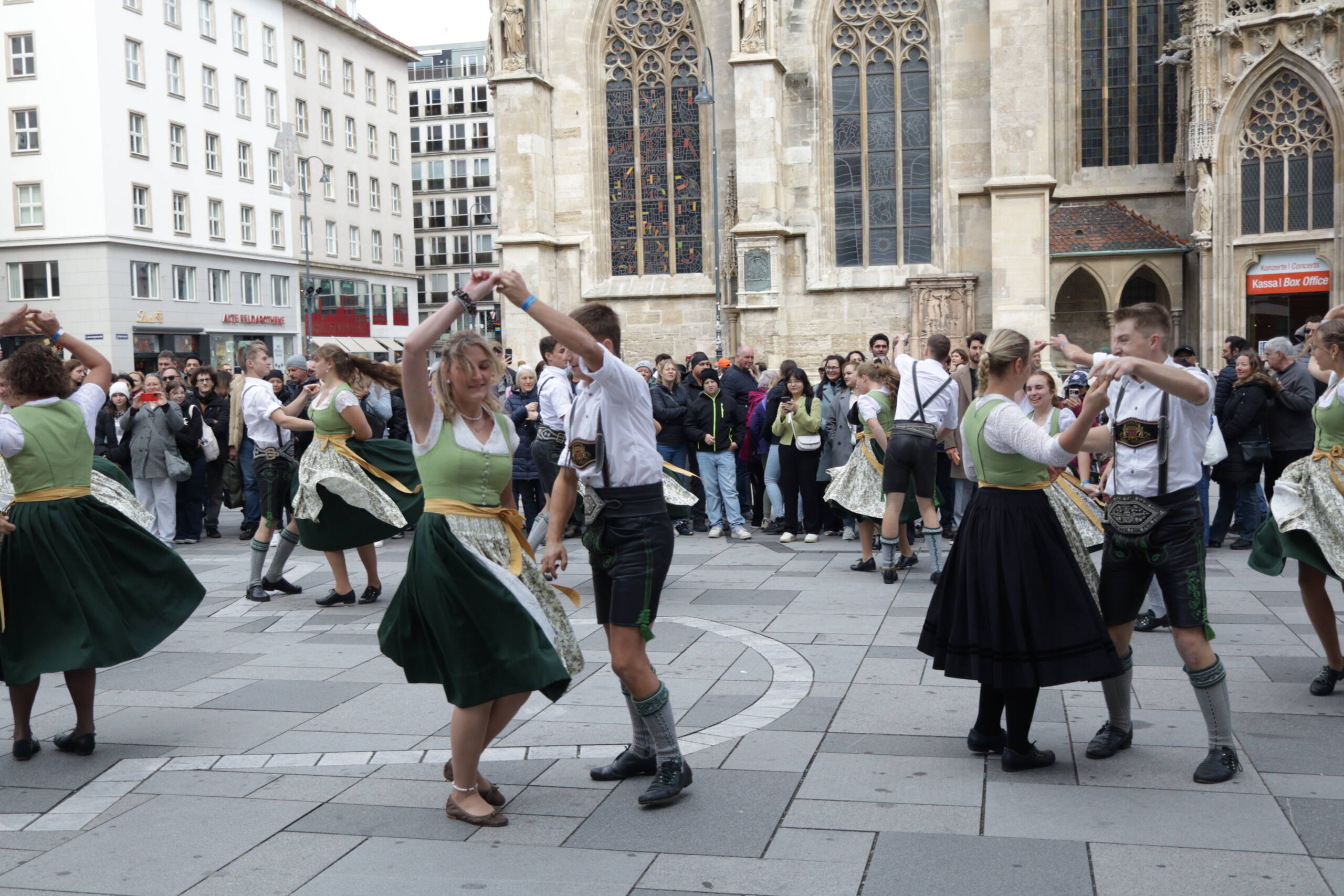There are travel experiences you plan for—the museums on your list, the cafés you’ve read about, the monuments everyone insists you can’t miss. And then there are the moments that simply happen, when you turn a corner and the city decides to surprise you. That’s what it feels like to stumble into the square in front of St. Stephen’s Cathedral in Vienna and suddenly find yourself surrounded by the energy of live folk dancing. The air shifts from the hum of footsteps and chatter to the sound of music, boots hitting the pavement in rhythm, and the infectious laughter of performers caught up in the joy of movement.
At the center of it all, couples dressed in traditional Austrian costumes spin and twirl with precision and flair. The women wear green dirndl dresses, their aprons tied neatly, ribbons catching the breeze as they move. Each turn sends the skirts swishing outward in soft arcs, a blur of green and white against the stone square. The men, sturdy in their lederhosen and embroidered suspenders, lead the dances with sure steps, lifting arms high to guide their partners through spins, their wool socks and polished shoes stamping out the beat. It’s the kind of performance that manages to look both rehearsed and entirely spontaneous, a dance form passed down generations but still alive with fresh energy.

Behind them, St. Stephen’s Cathedral looms large, its Gothic spires and stained-glass windows casting a solemn, timeless presence over the lively scene. The sharp detail of carved stone and centuries-old craftsmanship contrasts beautifully with the vibrant motion of the dancers. It feels like history and present day are in conversation: the cathedral reminding you of Vienna’s long and layered past, and the dancers showing that tradition here isn’t locked in glass cases but alive, breathing, and even playful.
The crowd gathered around adds its own rhythm to the event. Locals and tourists alike stand shoulder to shoulder, forming a ring of anticipation and delight. You see faces light up with recognition, perhaps older Austrians remembering these dances from their own youth, while travelers watch wide-eyed, phones raised, eager to capture a piece of the performance. Children tug at their parents’ sleeves, trying to mimic the steps, and older visitors smile knowingly, letting the music wash over them. There’s a sense of shared humanity in these few minutes—no one really needs to understand the lyrics or the calls, because the language of dance is universal.
What makes the moment most memorable, though, is how it breaks your expectations of Vienna. You come here thinking about Mozart, opera, and elegant cafés lined with crystal chandeliers and slices of Sachertorte. And yes, all of that exists, and it’s worth seeking out. But in the heart of Stephansplatz, between souvenir shops and tram lines, you’re just as likely to encounter living culture: the kind that doesn’t wait for you to buy a ticket or follow a guidebook. It’s simply there, waiting to pull you into the circle.
There’s something liberating about being part of the audience here. You’re not expected to know the steps, not expected to perform, only to watch and feel. Yet as the dancers’ feet stamp out patterns that echo both festival grounds and village squares, you can almost imagine yourself stepping in, letting the music carry you. The square becomes more than a sightseeing stop—it becomes a stage, a memory, and a reminder that travel’s best moments often arrive when you least expect them. And when the music fades and the performers bow, you walk away with a kind of lightness, as if you too have been part of Vienna’s timeless dance.
Leave a Reply